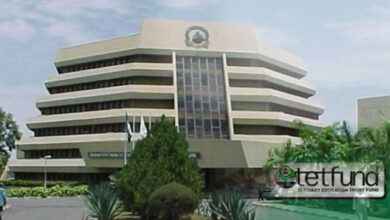Southwest Nigeria: A Call to Action for Regional Development

The Southwest region of Nigeria has long been a driving force behind the country’s progress, and it is imperative that it continues to lead the way in regional development. This was the message conveyed by Mr. Olufemi Awoyemi, mni, in his keynote address at the Southwest Development Commission (SWDC) and Southwest Private Sector Roundtable.
The State of Play
Nigeria has navigated a period of intense risk since the President Tinubu administration assumed office in May 2023. However, key indicators suggest that the nation has pivoted from a ‘risk watch’ to a ‘recovery watch’. The government’s bold reforms and successful policy interventions have steered the economy towards a recovery, with a GDP growth rate of 4.2% announced in Q2 2025.
The Imperatives for the Southwest
The Southwest region has been handed a vehicle for change within the constitutional framework – the SWDC. The commission’s mandate is to drive sustainable development, economic growth, and regional integration across the six states of the Southwest. To achieve this, the region must:
- Move from factor-driven to innovation-driven economy: The Southwest must transition from relying on natural resources and unskilled labor to becoming an innovation and knowledge-driven economy.
- Invest in human capital: The region must prioritize human capital development, focusing on education, healthcare, and skills acquisition.
- Improve infrastructure: The Southwest must invest in infrastructure development, including transportation, energy, and digital connectivity.
- Foster regional integration: The region must work towards integrating its economies, promoting trade, and investment.
High-Impact Projects
The SWDC has identified several high-impact projects that can transform the region into a cohesive economic powerhouse. These include:
- Regional Rail Network: Connecting Lagos to Ibadan, Abeokuta, Akure, Ado-Ekiti, and Oshogbo via high-speed rail.
- Integrated Power Grid & Renewable Energy Hubs: Building solar farms and mini-grids across Ondo, Ekiti, and Osun.
- Southwest Agro-Industrial Corridor: Linking agricultural belts in Oyo, Ogun, and Ekiti to processing hubs and export terminals.
- Regional Airport Network: Upgrading Akure, Ibadan, Gateway, and Ado-Ekiti Airports to handle cargo and regional flights.
- Digital Infrastructure Backbone: Laying fibre-optic cables across all six states for high-speed internet.
Conclusion
The Southwest region of Nigeria has the potential to become a driving force behind the country’s development. However, this requires bold leadership, strategic investment, and a commitment to regional integration. The SWDC and the private sector must work together to implement the high-impact projects identified and drive the region’s development agenda.
Key Takeaways
- The Southwest region must transition from a factor-driven to an innovation-driven economy.
- Human capital development and infrastructure investment are critical to the region’s growth.
- Regional integration and cooperation are essential for the Southwest’s success.
- The SWDC and private sector must work together to drive the region’s development agenda




